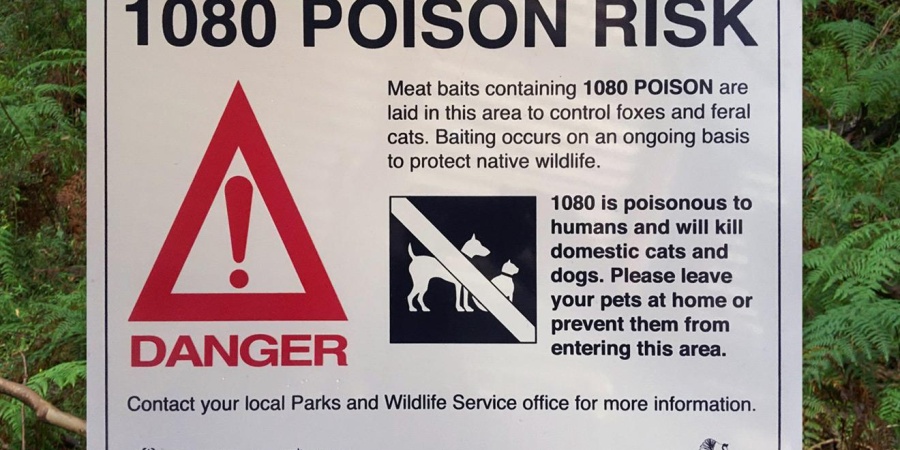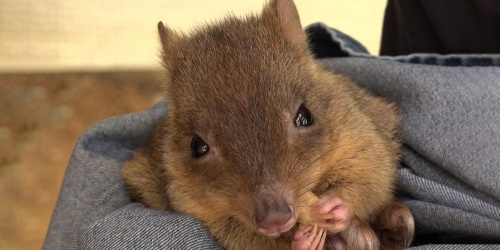
1080 poison risk sign
The 1080 poison risk areas identified on these maps are for the Western Shield program only. Other 1080 baiting may occur in these areas but are not shown in these maps. For information about other Parks and Wildlife Service-based 1080 baiting programs contact your local District Office, and always look out for warning signage.
Baiting information
- Poison baiting operations extend from Karratha in the north, through forests of the south-west to areas east of Esperance.
- These baits are poisonous to humans and will kill domestic cats and dogs. Do not take your pets into areas baited with 1080.
- Baiting occurs on a regular and ongoing basis and baited areas must be considered dangerous for pet cats and dogs at all times.
- The baits are extremely attractive to dogs. Adjacent landowners should be vigilant in keeping their dogs from roaming into neighbouring baited areas.
- All baited areas are signposted with 1080 POISON RISK signage (see image above).
- If your pet eats a bait, take them to a vet immediately. See this first aid guide for other useful information.
Why we carry out baiting
- Introduced predators such as foxes and feral cats, along with loss of habitat, are key factors in the decline of native wildlife.
- Through the Western Shield program, the Department of Biodiversity, Conservation and Attractions (DBCA) is actively reducing the impact of foxes and feral cats on WA’s native animals, particularly threatened species.
- The primary tool used to manage these introduced predators is landscape scale 1080 baiting, which covers approximately 3.8 million hectares of DBCA-managed and adjoining lands across Western Australia.
- The program has led to substantial and sustained population increases for many native mammal species and a broad range of other species including reptiles and ground nesting birds.
Downloads
Document
- 989.87 KB
(PDF)
Last updated 19-04-2023
Document
